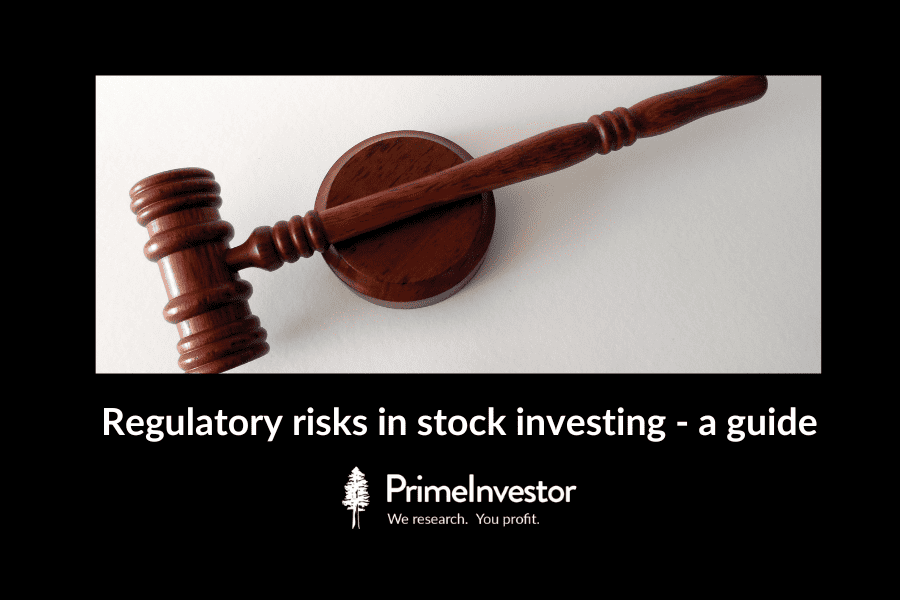As a stock investor in India, you may be a great at spotting sector opportunities, breaking down balance sheets and weighing managements. But if you fail to gauge the direction of government policy and regulations, your bets can go very wrong. Even seasoned stock-pickers tend to have a blind spot when it comes to factoring in regulatory risks – the risks that regulations and government policies pose to their holdings.
Here are a few examples on the importance of factoring in regulatory action into your stock choices.

Ethanol meltdown due to regulatory risks playing out
Last week’s meltdown in sugar stocks offered a good illustration of how sudden changes in government policy can disrupt the investment case for a sector.
Sugar stocks had enjoyed a substantial re-rating in the last four years on the back of the Centre’s new biofuel policy that encouraged the sugar industry to raise its ethanol output to meet its ambitious ethanol blending targets. The policy allowed sugar mills to produce ethanol directly from sugarcane juice instead of as a by-product of sugar. With an eye on new revenue streams, sugar mills invested aggressively in distillery capacities, diverted cane from sugar to ethanol, restricted sugar supplies and participated in tenders floated by oil companies to lift ethanol at government-fixed prices.
But on December 7, business media reported that the Central government had quietly made a behind-the-scenes about-turn in its ethanol policy. In a letter to the industry, the government had asked sugar mills to stop producing ethanol from sugarcane juice with immediate effect, for the current sugar season (October 2023 to September 2024).
Analysts tracking the sector remained in denial for some time, reasoning that there was no official notification and that it was not logical for the government to reverse this policy after making a song and dance about green fuel. But the market turned out to be wiser in beating down sugar stocks by 7-8%. It was later confirmed that the government had indeed decided to push back its ethanol blending programme.
With elections around the corner, prioritising inflation control seems to have taken political priority over green energy objectives. Sugar stocks as well as Praj Industries (which supplies distillery equipment to biofuel makers) are yet to recover from this setback.
But the ethanol saga is just one instance where a sudden shift in policy changed prospects for a sector overnight. As such shifts are not uncommon, it is up to stock investors to ensure that their research factors in risks from transient policies, when they build an investment case.
Here are some ideas on how one can navigate regulatory risks.
Flip-flops on reforms
Stock investors in India like to bet on big-bang reforms and liberalisation. But history tells us that, irrespective of the party at the Centre, big reform moves in India often get stalled, either because they fail to win popular support or a powerful lobby succeeds in scuttling it. Consider these instances.
- In 2020, the newly elected NDA regime tried to usher in big-ticket agricultural reforms through three new laws that a) enabled farmers to sell their produce outside mandis b) allow contract farming and direct purchases of produce by corporates c) repeal the Essential Commodities Act (ECA) that imposes draconian restrictions on storage and sale of food crops. These announcements saw agri-input stocks enjoy their place in the sun. But all three laws were withdrawn in 2021 after a barrage of protests. In fact, the Centre has been actively invoking ECA since then to control food inflation.
- The 2021 budget announcement that the government would privatize two PSU banks and a general insurer had these stocks partying. But two years on, there has been little progress and the idea seems to be on the back-burner
- Announcements that the government was keen to resume strategic sale of PSUs such as BPCL, Concor, BEML and Shipping Corporation of India sparked a lot of excitement, and triggered their re-rating in 2022. But a year on, the plan has been shelved.
- In January 2023, insurance stocks zoomed on reports that the upcoming budget would announce big reforms in the sector, in the form of a composite license for life and general insurers and lower capital requirements. But in the February budget, there was no mention of these reforms. Instead, there was a new speed-breaker to growth – a proposal to tax maturity proceeds from high-value insurance policies.
- With the Transport Minister plugging for EVs (electric vehicles) at every meeting, EV adoption has been a red-hot theme in the stock markets in the last couple of years. But EV two-wheeler sales have suffered a setback, after the government decided to sharply slash FAME II subsidies in June.
The lesson from these examples is clearly this – do not base your entire investment thesis for a sector or stock on a recently announced policy move or reform.
Regulations and stock prices
When it comes to the impact of government policy and regulations, all sectors are not made equal. Some have the regulator looking over their shoulder on every aspect of business, while others get away without much interference. Therefore, when shortlisting sectors or companies, assessing the degree of regulation they are subject to becomes critical. You can then try and figure out policy announcements that have the most influence on earnings and stock prices.
Here are some examples of highly-regulated sectors and what drives their stock prices.
Sugar
Input costs for mills are decided by the Fair and Remunerative Price (FRP) and State Advised Prices for sugarcane announced by the government. Whether mills can produce ethanol from sugarcane, B-heavy molasses or C-heavy molasses is government controlled. Prices and quantities of ethanol that oil companies lift is decided by the government. The government also sets minimum selling prices and export quotas for sugar. Overall, sugar stocks tend to be highly sensitive to policy announcements on FRP and SAPs, export quotas, ethanol prices and policy.
Fertilisers
With selling prices of fertilisers informally fixed at 10-30% of production costs, producer losses are reimbursed by the government as subsidy. Producers are paid a transport subsidy by the Centre to compensate for logistics costs. Branding is discouraged and producers have been directed to sell all products under a generic name. This policy direction has made fertilisers a highly commoditised product with no pricing power. Fertiliser stocks react sharply to the twice-a-year announcements on government subsidy and budget allocations.
Oil and gas
Though fuel pricing is theoretically ‘decontrolled’, oil marketing companies are often seen to be on a long pause in revising petrol and diesel prices when global crude prices shoot up. This is thanks to monitoring by the Petroleum Planning and Analysis Cell – PPAC. Recently, the government brought in a windfall tax on crude oil for upstream companies and export duties on petrol, diesel and aviation fuel. Stock prices for oil marketing and exploration companies are highly sensitive to fuel price revisions, windfall tax and export duty tweaks.
Banks and NBFCs
Extra-vigilant about systemic risks from lenders, RBI keeps a close watch on capital adequacy ratios, trends in loan growth and bad loans and can raise risk weights on any loan segment it perceives to be dicey. It regularly inspects lenders’ books for any deviation from its accounting norms. If found errant, it restricts fresh lending and customer on-boarding and impose monetary penalties. RBI can also stop top management appointments and supersede Boards. Bank and NBFC stocks are quite sensitive to RBI actions on NPA divergence, risk weights, management appointments, Board level changes and restrictions on new business.
AMCs
SEBI limits the revenue pool for AMCs by setting a cap on total expense ratios (TERs) they can charge. AMCs are required to manage all their costs within the TER limit. They can launch only 36 categories of products. SEBI also has stringent rules in place to pre-empt malpractices such as insider trading, front running etc by fund personnel. Lately, AMC stocks have seen both de-rating and re-rating on the back of shifting news flow about SEBI proposing a tighter TER regime. This is yet to be notified.
Creeping regulations
Not all lightly regulated sectors remain so lucky over time. Some attract regulatory attention all of a sudden. In such cases, it is important for investors to spot the changing regulatory intent early in the day, to be able to rework their investment thesis if needed.
As most big regulatory changes these days preceded by a working committee report or a public consultation paper, keeping track of these can give you early warning of impending changes.
Not so long ago, NBFCs were lightly regulated with RBI allowing them to experiment with the riskier lending models, as long as they didn’t accept public deposits. But after the collapses of IL&FS and DHFL, RBI has become hyper-cautious about systemic risks from NBFCs and has steadily tightened the screws on them.
In recent years, NBFC regulations on capital adequacy, bad loan recognition, accounting and liquidity maintenance have been brought almost on par with banks. Upper-layer NBFCs are now even more stringently regulated than banks, in some respects. Investors who tracked these changes over time would have been able to gauge RBI’s intent of reducing the regulatory gap between banks and NBFCs and its crack-down on digital lending.
The AMC business in India was subject to light-touch regulations until 2017 or so, when a change of guard at SEBI ushered in new rules on categorization. Thereafter, the regulatory bar has steadily risen, with new curbs on commissions, use of TER limits, skin-in-the-game and so on. Of late, AMC stocks have been responding more to news flow about SEBI meetings than AUM growth.
A sector regulator or the government taking interest in a sunrise sector should be a red flag too. E-commerce businesses in India had a free run in their initial days of scorching growth. But lately with Big Retail lodging its protest, there have been a slew of new regulations on their business models and even selling practices. Sometimes, companies which are not directly at risk from government policies can suffer collateral damage from policy shifts in another sector. KRBL, a leading basmati rice exporter has suffered reverses after the government, perceiving a rice shortage, decided to ban non-basmati rice exports and set a high minimum export price for basmati.
Looking for alternatives
If you do not want to deal with the headache of tracking regulations and their impact, you can simply choose to keep away from highly regulated sectors when stock-picking.
Most of the big macro themes in India offer investors the opportunity to bet on lightly regulated sectors, in place of a heavily regulated one. If you’d like to bet on the food security theme, for instance, you can choose to go with agrochemical or seed companies which are subject to far less regulation than fertiliser firms.
To bet on financialisation, you may prefer depositories or wealth management firms over stock brokers or AMCs. Capital goods, engineering and auto component makers have been better proxies for the capex boom and EV adoption than infrastructure companies or auto OEMs who have faced the brunt of changing policy. To play on real estate revival, cement companies may offer a better bet than RERA-embroiled developers.
It is not a coincidence that long-term wealth creators in the Indian market feature so few stocks from the sugar, oil and gas, fertilizer or the banking sector. The list is dominated by companies operating in sectors such as auto components, consumer goods, paints, IT and engineering – all lightly-regulated sectors.
Tight regulations may be just what you need as a consumer of products or services in India. But as a stock investor you need to look for the opposite!
The securities quoted are for illustration purposes only and are not recommendatory.








1 thought on “Regulatory risks in stock investing – a guide ”
very informative.
Comments are closed.